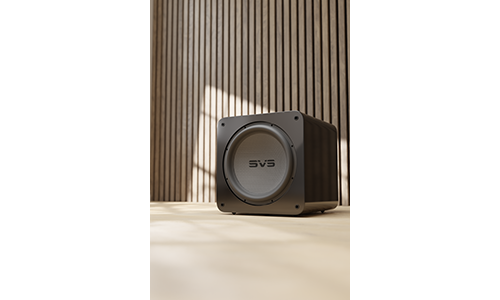SVS has just announced its 5000 R|Evolution Series subwoofers. The company says with the introduction of the two new models it is extending the subwoofer technology platform previously developed for the brand’s flagship 17-Ultra R|Evolution subwoofers, bringing reference performance to lower prices and smaller enclosures.
“SVS has always been about bringing reference experiences to broader audiences. While other manufacturers are still chasing benchmarks we established with the flagship 17-Ultra R|Evolution Series, we raised the bar and redefined what is possible at even lower prices with the 5000 R|Evolution Series,” says Gary Yacoubian, president, SVS.
“From the performance specs to the advanced tuning and control and user experience, 5000 R|Evolution defines its class. The finest subwoofer technology available is now accessible to more audiophiles and home theater fans than ever.”
5000 R|Evolution Series Subwoofers Employ Advanced Processing to Maximize Performance
Comprised of the SB-5000 R|Evolution sealed cabinet subwoofer and PB-5000 R|Evolution ported cabinet subwoofer, both new SVS models feature multiple advancements, including the company’s first-ever 15-inch driver, as well as dual monoblock amplification, and 295MHz Analog Devices DSPs, which SVS says is the most powerful processing engine it has used in a subwoofer to date.
For the new 15-inch driver SVS designed what it claims is the first-ever dual edge-wound voice coil to ensure stable transfer of electromagnetic current from the dual mono-amplifier to the 38-pound toroidal ferrite magnet motor to enable massive output with control. The drivers also utilize copper-clad aluminum voice coil wire to offer high levels of thermal capacity and magnetic field strength within the motor.
[related]
SVS emphasizes the 5000 R|Evolution subwoofer drivers are built to handle the most punishing playback while providing high levels of sonic detail with refinement at peak and moderate listening levels. The proprietary SVS design features a long-throw parabolic NBR surrounds for extreme excursion, sound pressure levels (SPL), and longevity.
Massive Amplifiers Power Subwoofer Drivers
SVS also says the subwoofers utilize dual mono-block STA-2000D Class-D 2,000 watt output amplifiers that are said to produce 5,000-plus watts peaks to power the subwoofer. Each amplifier powers one of the dual voice coils to increase the current into the motor while asserting control and increasing output potential. Eight 60-amp 200-volt MOSFETs to help ensure peak performance with the most demanding content through Class D efficiency.
Elaborating on the amplifier’s output potential, SVS states that its designers needed an equally capable power supply to accommodate the limits of a typical 15-amp home AC circuit. To meet these requirements the 5000 R|Evolution subwoofers include an onboard AC line conditioner with power factor correction that stabilizes the incoming voltage, corrects waveform distortions, and eliminates electromagnetic and radio interference. By doing so SVS stresses, the power conditioning continuously optimize signal quality while ensuring the subwoofers remain stable during voltage fluctuations.
The 295MHz Analog Devices DSP is said to orchestrate every function of the amplifier to shape in-room response and stabilize AC voltage delivery while managing a multi-point thermal and current monitoring system for optimal performance and efficiency. Advanced digital audio processing and DACs (Digital-to-Analog Converters) with 120 dB Signal-to-Noise Ratio provide greater headroom, lower noise, and acoustic linearity.
Calibration App Offers Controls for Volume, Phase, Polarity and More
Integrators calibrating the 5000 R|Evolution series can use the company’s companion app that includes controls for volume, low pass filter, phase, and polarity. The app also provides six parametric equalizers, room gain compensation, port tuning (PB-5000 R|Evolution only), power management settings, and more.
Moreover, the app also offers three memory presets for easy system adjustments to match homeowners’ listening preferences that include stereo, surround sound and immersive audio applications.

















